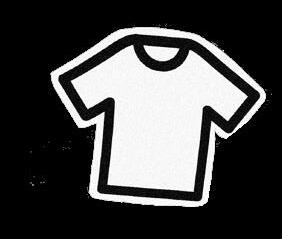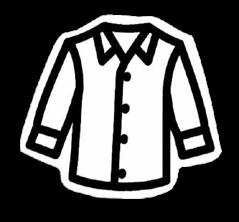
4 minute read
The mystery of our clothes 1
TIME
45-60 mins
Advertisement
Objective
To involve participants in a search for the origins of their clothes.
To evaluate how much we really know and are able to find about fashion production.
Description
In this activity participants search for the origins of mystery items of clothing given to them on cards. They seek out information online to try to answer a series of set questions. At the end they present their findings and evaluate their access to verified information about who made these clothes.
Topics
Transparency in the fashion industry
Fashion production
Tools
pens and paper access to internet for online searching
Activity
This activity starts by asking participants questions related to clothes they are wearing, clothes they have in their wardrobe or their favourite garments.
Sample questions:
Look what you are wearing today - how much do you really know about the clothes you are wearing?
What are the names of the brands that made your clothes?
Do you know where they were designed and by who?
Do you know who cut and sewed them?
What materials are they made of?
Where were these materials produced and by who?
Where and how did you get these clothes?
Do you have any idea what will happen to them once you no longer want them?
Leave space for participants to think and, if they want, let them write down their answers.
Divide participants into groups of 2-5 people or, if necessary or desired, they can work individually. Each group or individual is then given the story of a mysterious garment (see below) to work with.
Then, the task is the same for everyone:
• to search for the answers
• to these questions about their chosen garment, online or offline
• to think about why it may have been so easy or difficult to find these answers
Tell them that they can search anywhere - on websites or social media.
Note
Since at this time there is very little independent verified information about fashion production - e.g. some of it may be published by the brands themselves, and some may be from unverified sources - participants will most likely have some difficulties with this search. They might find some independently verified information, as well as a lot of information that is not relevant to the garment they are investigating , but is related to the brand or its production of other garments. This information is useful and they should be allowed to present a story about their garment and what they did and did not find out about its production.
At the end of this researchprocess, you can ask one participant per group to present the group’s findings as a garment production story. Depending on what they could and could not find, lead the conversation about it and reward them for their efforts.
You can use following questions:
Have you found all of the information you were searching for?
How did you search for it, what words and terms did you use?
What websites did you use for search?Where did you find stories of garment production?
Have you found any surprising, disturbing or suspicious information?
How do you know the information you have found is correct and honest?
How did you verify the information? (You can use this link.)
Are you happy with the information you found?
To close the discussion, you can ask them questions about information they have about other products they are using.
What do you know the most about: the food you eat, the clothes you wear or the electronics you use?
Is it important or interesting for you to know more about your clothes - why yes or why not?
What could happen if we do not have sufficient information (as customers) about how our clothes or any other products are being produced?
How do you feel knowing you can or cannot find any information about your clothes?
Methodology Tips
• Participants might need guidance while doing this task. Monitor group work and give them support if needed.
• Some participants might get frustrated while doing this task - this can be turned into an experience and clear understanding of the complexity of the information we are given (or rather not given).
• Monitor group dynamic and make sure each participant is involved in the search. The group’s search methodology is up to them.
• Add something about what it means to verify information?


Tips On Online Activity
Participants can do this activity by video using free online meeting platforms and work collectively in breakout rooms.
Card 1
Mysterious t-shirt
Fashion garment
Plain white t-shirt
Material
Your t-shirt is made of fibres infamously grown and harvested on American plantations by enslaved African-American people, until the end of the Civil War in 1865.
Question: What‘s the name of the material?
Origins of material
Your t-shirt’s material comes from a country which is one of the biggest world exporters of this material. Growing the plants from which these fibres are harvested caused the almost total disappearance of the lake (called in some languages ‚sea‘) located between two countries.
Now, most of this fibre that‘s in your tshirt‘s material is grown elsewhere, all around the world. In 2014, its need for irrigation in one growing place notoriously caused a nearby sea to almost totally disappear when all of its water had been taken for this purpose. This sea was located on the border between two countries. After harvesting, these fibres were woven into cloth in a local factory.
Question: Which two countries were these?
Dyeing
Your tshirt’s cloth was then dyed blue in a factory along the River Padma.
Question: Can you find out what country these factories were in?
Brand
When your tshirt was manufactured, a world famous brand logo was added. What started as a small, local fashion brand is now a well known fast fashion giant, founded 1947 in Sweden.
Question: What‘s the name of the brand?
Design
This t-shirt was designed at the headquarters of this brand.
Question: What city and country is it in?
Production
The majority of your tshirt’s production (cut and sew) was done in a country sadly known for one of the biggest tragedies in the fashion industry (in 2013).
Question: What was this tragedy and in which country did it happen?
Ownership
You picked up this t-shirt at a clothing exchange event in your local community.
Question: What‘s this kind of event called?
Afterlife
When you finished with this t–shirt, you recycled it through a textile collection box. It was exported to an African country where the import of second hand clothing hadn’t yet been banned.
Question: Which African country banned the import of second hand clothing in 2018? Why did they do this?



